10 Sneaky Ways Grocery Stores Get You To Buy More Stuff
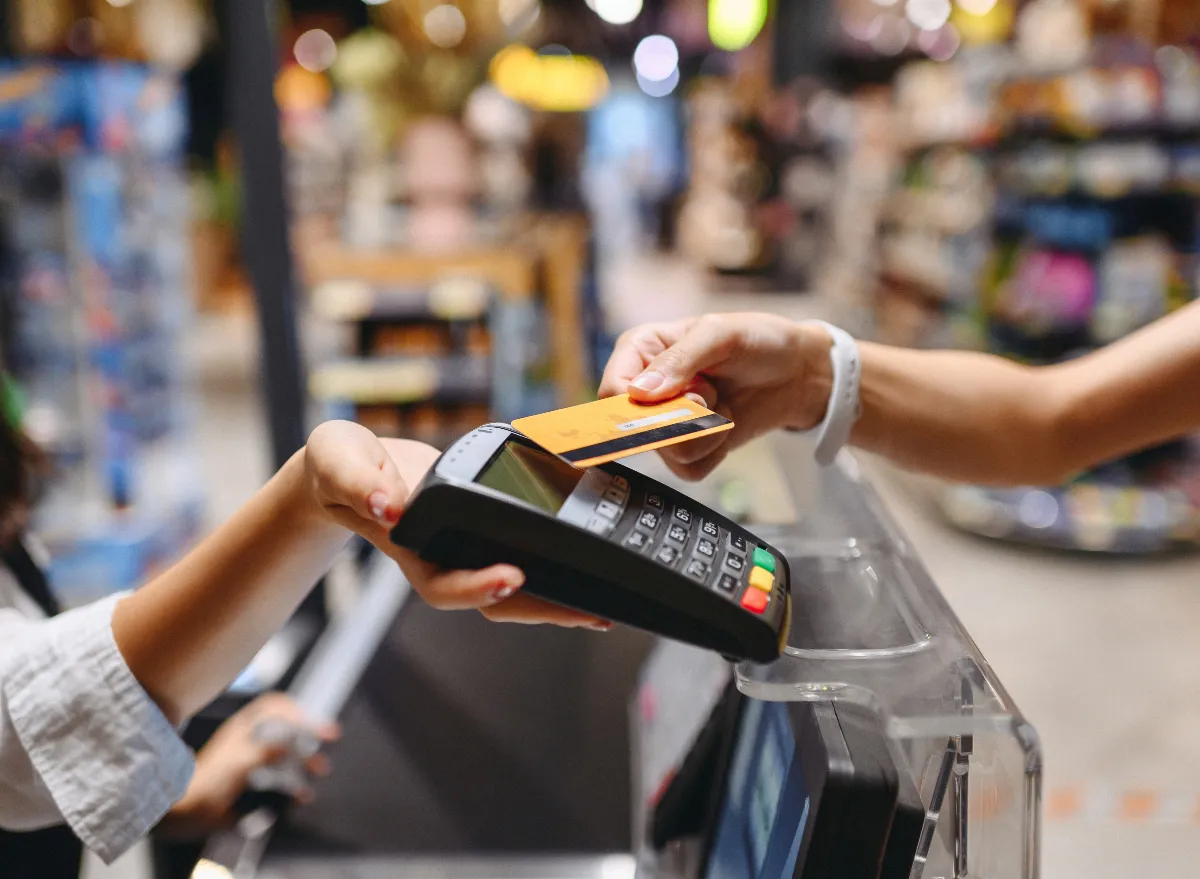
Food is one of the largest expenses Americans face each year—behind only housing and transportation, according to the U.S. Bureau of Labor Statistics. We all have to eat, right?
But, while nourishment is an essential cost, it’s also one that is much easier to manipulate compared to things like rent or health insurance payments—making it one that frequently comes up during monthly budget assessments. Plan all you want to try to cut down on your grocery bills and to free up a little more cash for other essentials or endeavors. But oftentimes, even with all this meticulous preparation, you’re still left at the checkout counter, mouth agape, watching your total ceaselessly rack up higher and higher.
So, what gives? Inflation doesn’t help, as grocery prices are expected to increase a total of 5.1% in 2023, right on the heels of an 11.4% increase in 2022. But, this is certainly not the only factor at play. Unfortunately, grocery stores are not on your side, and as soon as you cross through the automatic doors, they’re throwing curveballs at you to get you to think less and spend more.
Each piece of the shopping experience, including product placements, deals, discounts, and more, is down to a science, so we’ve enlisted the help of a few consumer analysts and money-saving experts to call out some of these sneaky strategies. Read on to better arm yourself for your next grocery run and to safeguard that all-important budget.
Displaying high-priced items on end caps
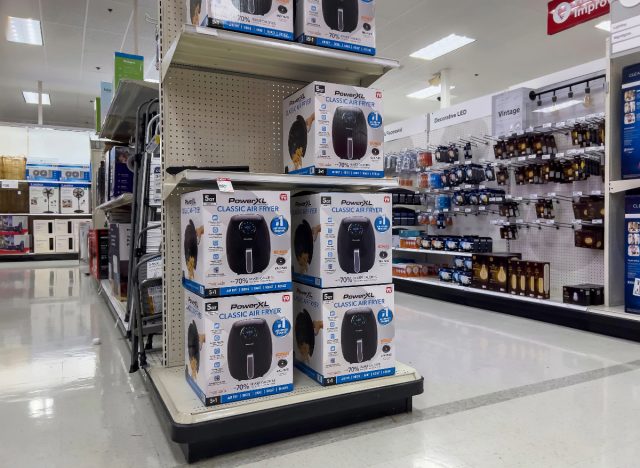
End caps are prime real estate at the grocery store, and unfortunately an area where you’re more likely to be duped into spending more money, according to Julie Ramhold, a consumer analyst and company spokesperson with DealNews.com. The merchandise on these shelves is ever changing and Ramhold explains it’s often where stores place more expensive items. This is especially true for the end caps located near the entrance and facing the front of the supermarket. Here, more valuable items are sure to get a great deal of face time. Ramhold says that customers are “more tempted to add items to their cart when they see them early in their shopping trip,” before they’re in a hurry to leave and prior to bogging down their cart with other products.
Calculated store layouts
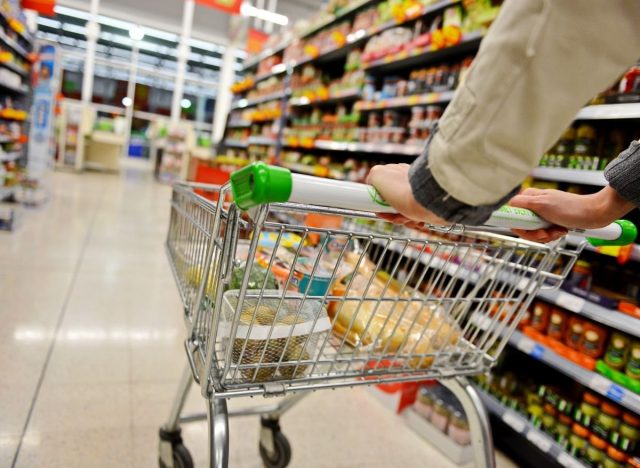
“Have you ever wandered down an aisle that logically should have an item only to discover what you’re looking for is two aisles over?” asks Ramhold. This is a common grocery store frustration, and she says it happens because stores strategically “spread out their merchandise to keep shoppers in-store longer.” As consumers hunt for their essentials like bread and eggs (which are typically kept toward the back), they are bound to encounter more foods and goodies that didn’t make the list, but may end up on the receipt anyway.
You may also notice that the layout at your local store gets modified and switched around quite often. This is done for the same reasons and to keep even the most habitual shopper on their toes.
Buy one, get one promotions
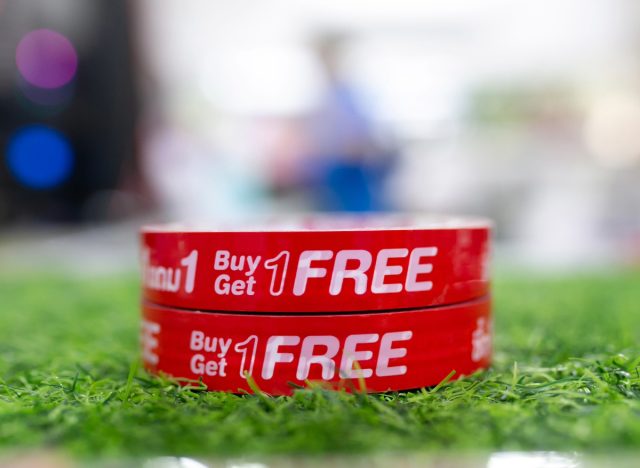
Beware the BOGOs. The thought of getting something for free, or at a large discount, is a huge incentive for any budget-focused buyer. But, Rahmold admits it’s not always all it’s cracked up to be. In some cases, retailers will actually mark up the cost of the first item in the deal, so you end up paying close to what you would have paid at regular price. For example, a bag of chips may sell for $2.49 on a normal day. But, as part of the BOGO “deal,” it’s priced at $4.99, so no cost savings are really present.
In all the excitement of getting a freebie, customers may also end up buying excess products they really didn’t need in the first place.
Confusing bulk deals
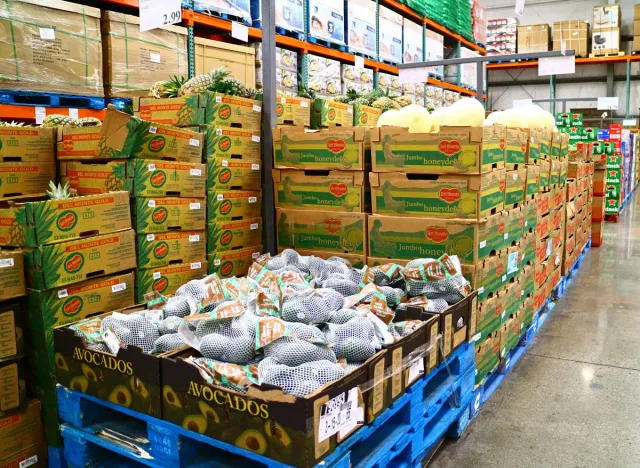
In the same vein as BOGOs, stores will also try to trick you with puzzling and strangely worded bulk offers. “When you see 10 for $10 or 5 for $5.50, there’s a marketing gimmick at play,” says Andrea Woroch, consumer savings expert and TV personality featured on Good Morning America, NBC Nightly News, Today, and more.
“These bulk deals are often perceived as a great value so shoppers are likely to grab the total amount advertised even if you can still get 1 for $1,” she continues. “Not to mention, multiple deals that are hard to break down quickly can be confusing and you are more likely to skip the math and grab the items promoted as on sale even if they’re not the cheapest option.” To avoid falling into this deceptive trap, Woroch recommends always reading the fine print to uncover the real price per unit.
Higher priced items within eyeshot
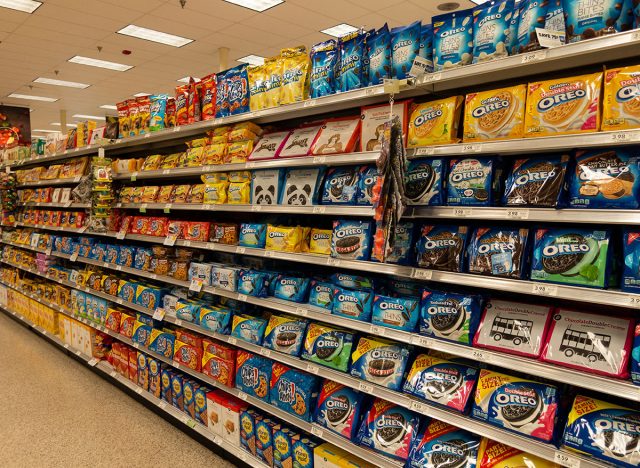
Endless amounts of products litter grocery store shelves, making it impossible to take in every option available. But, what consumers do tend to always notice are those products placed smack dab in the middle of the display at eye level. This is the money spot, and subsequently where stores cleverly stock higher-priced, brand-name items.
“If you like generics, then you’ve probably noticed you might have to hunt around on the shelves in order to find the store-brands of the big name-brand products,” says Rahmold. “That’s by design, as stores will put these higher or lower on shelves so that the more expensive name-brand items are the ones that catch your eye. Not every shopper is willing to take the time to look for the cheaper generic, so by using this method, they can ensure some shoppers will just go with the first thing they see and therefore spend more than if they were to take the time to look for the less expensive alternative.”
Woroch adds that if you’re willing to take the time to track down those store brand gems, you’re looking at an average 30% savings on your grocery bill.
Coupons for nonessential items
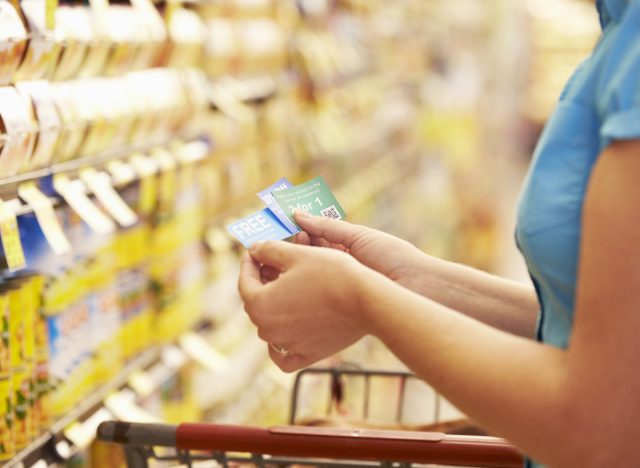
Clipping coupons sounds like an economical activity. But, unless you’re fully committed and doing it to the extreme, it may not be doing you any favors. “Coupons can help you save on groceries but not if you’re using them for items you didn’t intend to purchase and that’s exactly what grocery stores hope you do,” says Woroch. So, instead of couponing in order to save 50 cents on a brand of shampoo you wouldn’t normally buy, she suggests using a rebate app like Fetch. The platform allows you to upload your grocery receipts and rack up points on all your purchases to be traded in for gift cards and more.
Tempting food displays
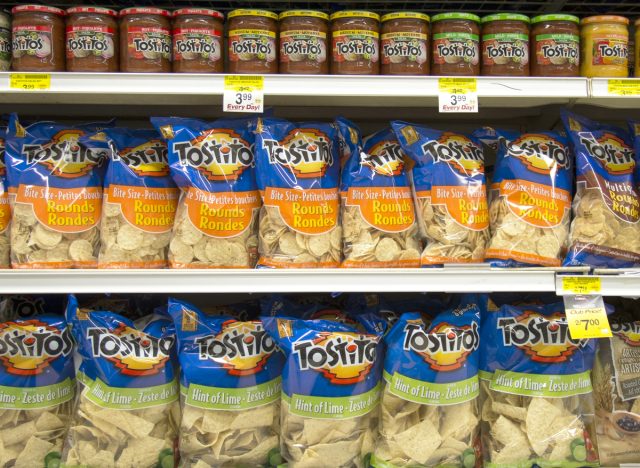
“Ever walk into a grocery store and come across a display of food that is carefully crafted to suggest a meal or dish like chips, avocado, lime and salsa?” Woroch asks. These kinds of creative presentations can be seen all throughout the supermarket, and can influence you to crave and eventually buy foods and ingredients that were never on your radar before you entered the store.
In order to stave off these enticements, Woroch says it’s best to always have a list and game plan—think of them as your “shopping blinders.” Additionally, taking advantage of online ordering can help to reduce impulse food purchases.
Free samples
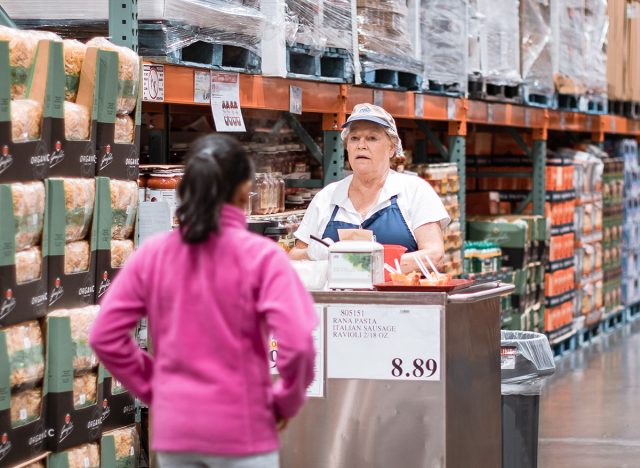
In the same way that food displays get your mouth watering, so do complimentary samples. And, again, who can resist something free? But, we all know there’s a major catch. Whether you genuinely enjoyed the free bite, or you just felt pressured to buy the product after receiving a handout, you still end up forking over more money than you planned.
Mega-sized shopping carts
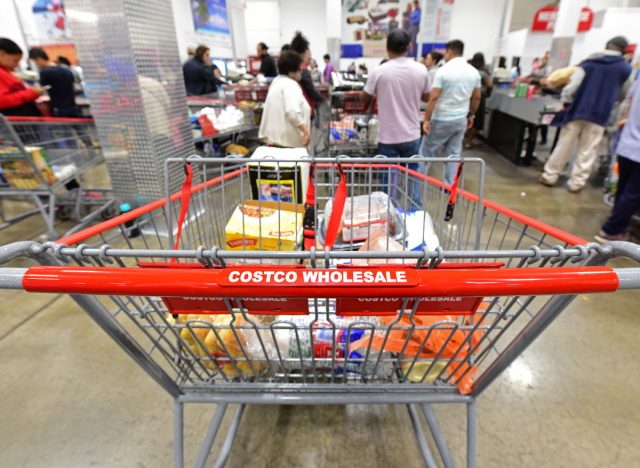
The size of supermarket shopping carts has certainly gotten a little out of hand—just look at Costco where you can tool around with an actual pallet. And, just like with many other elements at the store, there’s an ulterior motive at play here. “These huge carts are designed to entice you to add more items to them,” says Woroch. “When you throw just a few items in, it doesn’t fill much space so there’s the illusion that you’re not buying much which can cause you to add more on impulse.” Making use of baskets and the self-checkout instead can help to keep you in check.
Seasonal items
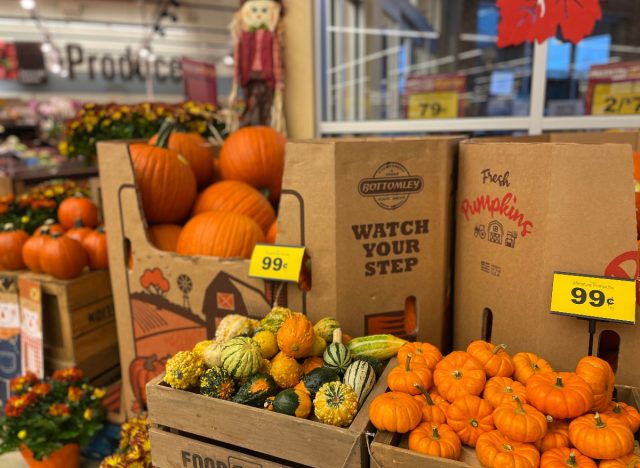
Even when it’s not Halloween, those holiday items at the store can be a scary sight for your wallet. Retail and small business expert Lisa Richards, CEO and creator of The Candida Diet, says that these displays are “a highly effective yet often overlooked tool for influencing consumer behavior and driving sales” and also “thoughtfully crafted to evoke shoppers’ emotions and create a sense of occasion.”
Says Richards, “By showcasing seasonal items, decorations, and themes, stores cultivate a feeling of urgency and anticipation, making customers feel compelled to participate in the seasonal experience or risk missing out.” In addition, she notes that seasonal displays are more often than not located at the store’s entrance or in other high-traffic areas to “maximize visibility and influence.”









